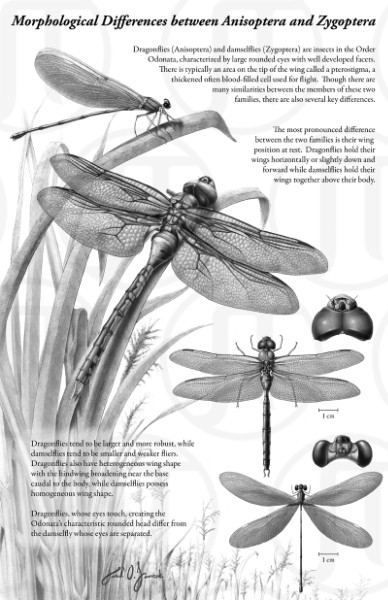Morphological Differences Between Anisoptera and Zygoptera
The Damselfly and Dragonfly are very similar insects in most respects. However they also have several key differences including size, wing shape, eye position, and head shape. This illustration received the 2008 AMI Award of Excellence.
Text:Dragonflies (Anisoptera) and Damselflies (Zygoptera) are insects in the Order Odonata, characterized by large rounded eyes with well developed facets. There is typically an area on the tip of the wing called a pterostigma, a thickened often blood-filled cell used for flight. Though there are many similarities between the members of these two families, there are also several key differences. The most pronounced difference between the two families is their wing position at rest. Dragonflies hold their wings horizontally or slightly down and forward while Damselflies hold their wings together above their body. Dragonflies tend be larger and more robust, while Damselflies tend to be smaller and weaker fliers. Dragonflies also have heterogeneous wing shape with the hindwing broadening near the base caudal to the body, while Damselflies posess homogeneous wing shape. Dragonflies, whose eyes touch creating the Odonata’s characteristic rounded head differ from the Damselfly whose eyes are separated
Anatomy in this biological illustration: Eyes, Wings, Pterostigma










































